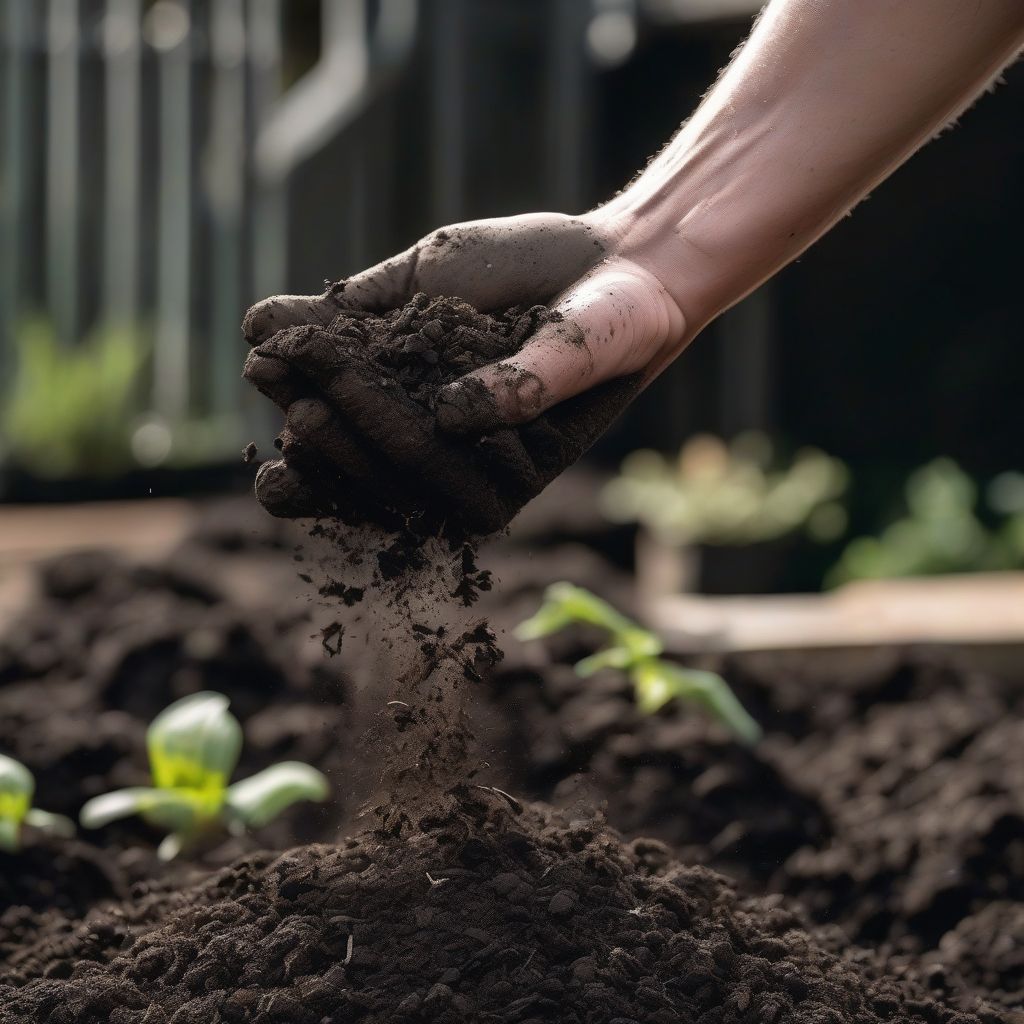Gardening is a deeply rewarding hobby. There’s something magical about nurturing life from a tiny seed and watching it flourish into a vibrant plant, laden with colorful blooms or juicy fruits. But our joy can quickly turn to despair when pesky insects or stubborn diseases threaten to sabotage our hard work. Don’t worry! With a little understanding and a proactive approach, you can create a haven for your plants and keep those unwelcome visitors at bay. Think of it as building a strong immune system for your garden – one that can withstand attacks and thrive.
Understanding the Enemy: Common Garden Pests and Diseases
Before we declare war, it’s wise to know our enemy, right? Here are some of the usual suspects you might encounter in your garden:
Pests:
- Aphids: Tiny, pear-shaped insects that suck sap, leaving behind curled leaves and stunted growth.
- Slugs and snails: These slimy creatures love to munch on leaves and seedlings, especially in damp conditions.
- Whiteflies: Small, winged insects found on leaf undersides; they suck sap and can transmit diseases.
- Cabbage worms: Green caterpillars that devour the leaves of cabbage, broccoli, and other cruciferous vegetables.
Diseases:
- Powdery mildew: A white, powdery fungus that appears on leaves, stems, and flowers.
- Blight: A general term for various diseases that cause rapid browning and death of plant tissues.
- Root rot: A fungal disease that thrives in overly wet soil, causing roots to decay.
Prevention: Building a Strong Foundation for a Healthy Garden
Remember the old adage, “Prevention is better than cure”? It holds incredibly true for gardening. By creating the right environment and adopting healthy practices, you can significantly reduce the likelihood of pests and diseases taking hold:
1. Choose the Right Plants:
Just like humans, some plants are naturally more resistant to certain pests and diseases. Selecting varieties suited to your climate and soil type gives your garden a head start. Research disease-resistant cultivars, especially for vegetables prone to common ailments. For example, if you’ve battled blight in the past, look for tomato varieties labeled “VFN” for resistance to verticillium and fusarium wilts, and nematodes.
2. Embrace Crop Rotation:
Don’t plant the same crops in the same spot year after year. Crop rotation disrupts pest and disease cycles by removing their preferred food sources and preventing the buildup of soilborne pathogens.
3. Water Wisely:
Overwatering creates a haven for fungal diseases and root rot. Water deeply and less frequently, allowing the soil to dry slightly between waterings. Also, water at the base of plants, avoiding the leaves, to prevent fungal growth.
4. Provide Adequate Sunlight and Air Circulation:
Most vegetables need at least 6 hours of sunlight daily. Proper spacing between plants allows for good airflow, reducing humidity levels and discouraging fungal diseases.
5. Feed Your Soil:
Healthy soil grows healthy plants. Add compost or aged manure to improve soil structure, drainage, and nutrient content. Strong, vigorous plants are better equipped to resist pests and diseases.
 Healthy Garden Soil
Healthy Garden Soil
6. Keep It Clean:
Remove plant debris promptly, as it can harbor pests and diseases. This includes fallen leaves, spent blossoms, and diseased plant parts. Dispose of them properly, and avoid composting diseased materials.
7. Practice Companion Planting:
Some plants naturally repel insects or attract beneficial insects that prey on pests. For example, marigolds deter aphids, while basil repels flies and mosquitoes. Experiment with different combinations to find what works best for your garden.
Natural Pest and Disease Control Methods: Working with Nature
If prevention efforts aren’t enough and you encounter unwanted guests in your garden, don’t panic! There are many effective, eco-friendly methods to manage pests and diseases:
1. Introduce Beneficial Insects:
Ladybugs, lacewings, and praying mantises are natural predators of common garden pests. Attract them by planting their favorite flowers, such as dill, fennel, and yarrow.
2. Homemade Sprays and Solutions:
Many everyday household items can be transformed into effective pest deterrents. A simple spray of soapy water can deter aphids and other soft-bodied insects. Neem oil, a natural insecticide, disrupts the life cycle of many pests. A garlic and chili pepper spray can deter rabbits and deer.
3. Physical Barriers and Traps:
Netting can protect vulnerable crops like lettuce and cabbage from cabbage worms and other flying insects. Copper tape around pots and raised beds creates a barrier against slugs and snails. Beer traps lure slugs and snails to their demise.
4. Diatomaceous Earth:
This natural powder, made from the fossilized remains of diatoms, is a mechanical insecticide. It works by dehydrating insects upon contact.
When to Use Chemical Controls
While natural methods should always be the first line of defense, there are times when chemical controls might be necessary. If you choose to use chemical pesticides or fungicides, it’s crucial to:
- Choose the Right Product: Select a product specifically designed for the pest or disease you’re targeting.
- Follow Instructions Carefully: Over-application can harm beneficial insects and the environment.
- Apply at the Right Time: Timing is everything! Apply pesticides when pests are most active and when beneficial insects are least likely to be affected.
- Store Chemicals Safely: Keep pesticides out of reach of children and pets.
Maintaining a Healthy Garden: A Continuous Process
Remember, gardening is a journey, not a destination. Maintaining a healthy, pest-free garden requires ongoing observation and care. By adopting a proactive approach, embracing natural methods, and choosing chemical controls only as a last resort, you can create a thriving oasis for your plants and enjoy the fruits (and vegetables!) of your labor.
Conclusion
Keeping your garden healthy and productive requires vigilance and a little bit of knowledge. By understanding the importance of prevention, recognizing common pests and diseases, and employing a combination of natural and, if necessary, chemical control methods, you can create an environment where your plants can flourish. Remember, gardening is a partnership with nature, and respecting that balance is key to a thriving garden. So, get your hands dirty, enjoy the process, and reap the rewards of a bountiful harvest!
If you’re looking to expand your gardening knowledge, check out our articles on The Best Time of Year to Plant Different Types of Seeds, How to Grow Fruit in Containers: Tips and Tricks, and Essential Garden Maintenance Tasks for Every Season. Happy gardening!
[amazon bestseller=”garden pest control”]
